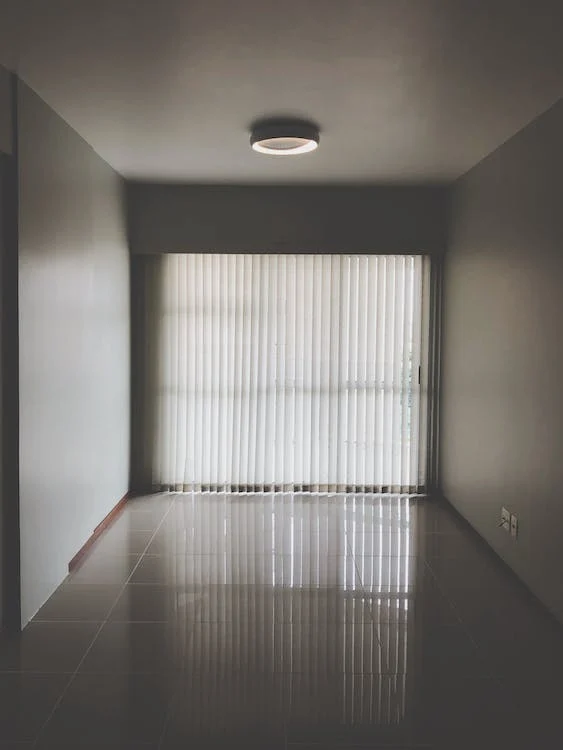9 Steps to Pick the Best Mortar Glue for Floor Tiling
Contents
Step 1: Prepare the thin-set mortar
Step 2: Install the mortar adhesive
Step 3: Lay the second-floor tile
Step 4: Place the braces
Step 5: Lay the whole tiles
To install from a corner
Step 6: Check the evenness of the tile on the floor
Step 7: Adjust the level of the floor tile
Step 8: Lay the cut tiles
Step 9: Grout the floor tiles
Tile is a strong and easy-to-clean floor covering. Tile installation is done on a clean, dry, level, and solid floor.
Before tiling your floor, prepare it: identify any defects and correct them according to the nature of your floor.
The preparation of the floor varies according to whether it is a cement floor, a parquet floor, a tile floor, a lino floor, or a carpet.
When you have prepared your floor, make the layout: calculate the number of tiles needed, make measurements and determine an order of installation for the tiles. This is important not only to facilitate the installation of the tiles but also to avoid mistakes.
Once the layout has been determined, prepare the mortar glue (tile adhesive) and spread it on the floor, then lay the tiles.
What type of mortar adhesive should I use to lay floor tiles?
There are different types of mortar glue (tile adhesive), depending on the rooms you are tiling (terrace, bathroom, kitchen, etc.) and the type of tile you are laying. This information is indicated on the packaging.
Choose the right mortar glue, depending on the room you are tiling and the type of tiles you are installing.
The adhesive is sold ready to use or as a powder to be mixed with water.
How much adhesive mortar is needed to lay floor tiles?
The quantity of mortar glue needed and the size of the notched spatula you use to apply the glue differ according to the dimensions of the tiles you are laying.
– Plan to spread about 2 kg of adhesive mortar per square meter if you are laying small tiles (up to 5 × 5 cm square). Use a notched trowel with narrow teeth (4 mm wide) to spread the thin-set mortar.
– Plan to spread about 3 kg of thin-set mortar per square meter if you are laying conventional tiles (up to 15 × 15 cm square). Use a medium-notched trowel (6 mm wide tooth) to spread the thin-set mortar.
– Plan to spread up to 6 kg of thin-set mortar per square meter if you are laying large tiles (up to 30 × 30 cm square). Use a wide-toothed notched trowel (9 mm tooth width) to spread the thin-set mortar.
– For huge tiles, use 6 kg of thin-set mortar for 1 m² of the surface. Use a wide-toothed spatula and glue the floor and the back of the tiles.
1. Prepare the mortar-glue
If you are using powdered thin-set mortar, prepare it by mixing it with water:
– In a trough, mix the powder with water. Follow the proportions indicated on the package.
– Mix the water and powder with a stick, without whipping the mixture, to avoid trapping air bubbles or lumps.
– To prepare a large quantity of thin-set mortar, use an electric mixer or a drill equipped with a whisk attachment to make the mix. Set the mixer or drill to a slow speed.
– Mix until a smooth, homogeneous paste is obtained.
2. Install the thin-set mortar
Precautions before applying the thin-set mortar
Do not apply the adhesive mortar on a floor that is too hot or too cold. The floor’s temperature should not be below 5°C or exceed 25°C.
If you are laying tiles on a heated floor, turn off the heating a day before laying the tiles.
Spread the adhesive on the floor
Spread the adhesive in a fairly thick layer over an area of about 1 m² :
– Apply the adhesive with a trowel and spread it with a spatula.
– Then, make ridges with the teeth of the spatula. Hold your spatula so that it is at an angle.
– Spread the mortar in an even layer.
– Once you have laid all the tiles on the 1 m² surface, spread the adhesive on the next surface.
Tip: Clean the equipment used for gluing immediately after use.
3. Lay the first tile on the floor

Place the first tile in the location you planned during the layout stage.
Lightly tap it into place with a rubber mallet.
Tip: Wipe any adhesive residue with a damp sponge and rinse frequently. This will prevent traces of adhesive mortar from appearing on the tiles once they are dry.
4. Place the crosspieces
Place spacers at the corners of the tile; the spacers delimit the space of the tile joints.
– Press the spacers lightly to secure them.
– Remember to remove the spacers before the adhesive mortar has dried.
Note: Some of the spacers can be cast into the thin-set mortar. You do not need to remove them.
5. Laying the whole tiles
Once the first tile is laid, lay the next set of whole tiles in the order you established during the layout (tile installation planning).
– Lay the tiles and tap them with the rubber mallet to set them in place.
– Clean the adhesive mortar from the tiles with a damp sponge and rinse frequently.
– Don’t forget to place spacers at the corners of each tile.
Once all the tiles are laid in one square, spread the thin-set mortar over the next square and continue laying the tiles.
Note: Do not apply adhesive to the edges until you have cut the tiles that will cover these spaces. The glue may dry before you finish laying the cut tiles.
For installation from a corner
If you are laying tile from a corner:
– Once the first tile is placed in the corner, lay the tiles alternating along each wall for a length of 1 m.
– Fill in the space between the two rows of tiles to form a square.
– Then, lay the rest of the tiles along each wall, gradually filling squares with a surface area of 1 m².
– Finish by tiling the rest of the room, filling in a 1-square-meter area at a time.
– Be sure to finish the installation at the door so you can get out easily.
Please note: The tile is normally laid on the floor from the center. Installation from a corner is only possible if all corners and walls are perfectly straight.
6. Check the evenness of the floor tiles

Check regularly that the tiles are aligned correctly and all at the same level:
– Check the alignment of the tiles with a ruler. If the tiles are out of alignment, gently push them into line without pulling or pushing them in.
– Check the evenness of the tiles with a spirit level and adjust the level if necessary.
7. Adjust the level of the tiles on the floor
Adjust the level of the tiles with a wooden bat and a rubber mallet.
– Place the wooden bat at an angle on several tiles at a time.
– Tap with the rubber mallet to level the tiles.
8. Lay the cut tiles
Once you’ve laid the entire tiles, there are still small gaps at the edges. These gaps are called edges. Cut edge tiles and lay them to cover the edges.
Cut the edge tiles
Cut the edge tiles by hand, using special clamps, or by machine, using an angle grinder, electric tile cutter, or tile cutter.
Laying the edge tiles
Spread the adhesive mortar on the edges with the trowel and streak with the spatula.
– Lay the edge tiles without forgetting the crosspieces.
– Tap the edge tiles with the rubber mallet.
– Check and adjust their alignment and level.
– Clean any traces of adhesive mortar on the tiles with a damp sponge that is frequently rinsed.
– Allow 24 to 48 hours to dry after the complete tile installation.
Note: Don’t forget to remove the braces before the adhesive dries!
9. Grout the floor tiles
Once the tile installation is finished and the adhesive mortar is dry, make the tile joints.
– Prepare the grout and spread it over the tiles.
– Fill the joints with mortar and then smooth.
– Allow drying.
Equipment for laying floor tiles
Tiling bat
Spacers
Rubber mallet
Glue mortar
Spirit level
Mason’s bucket
Notched spatula
Trowel